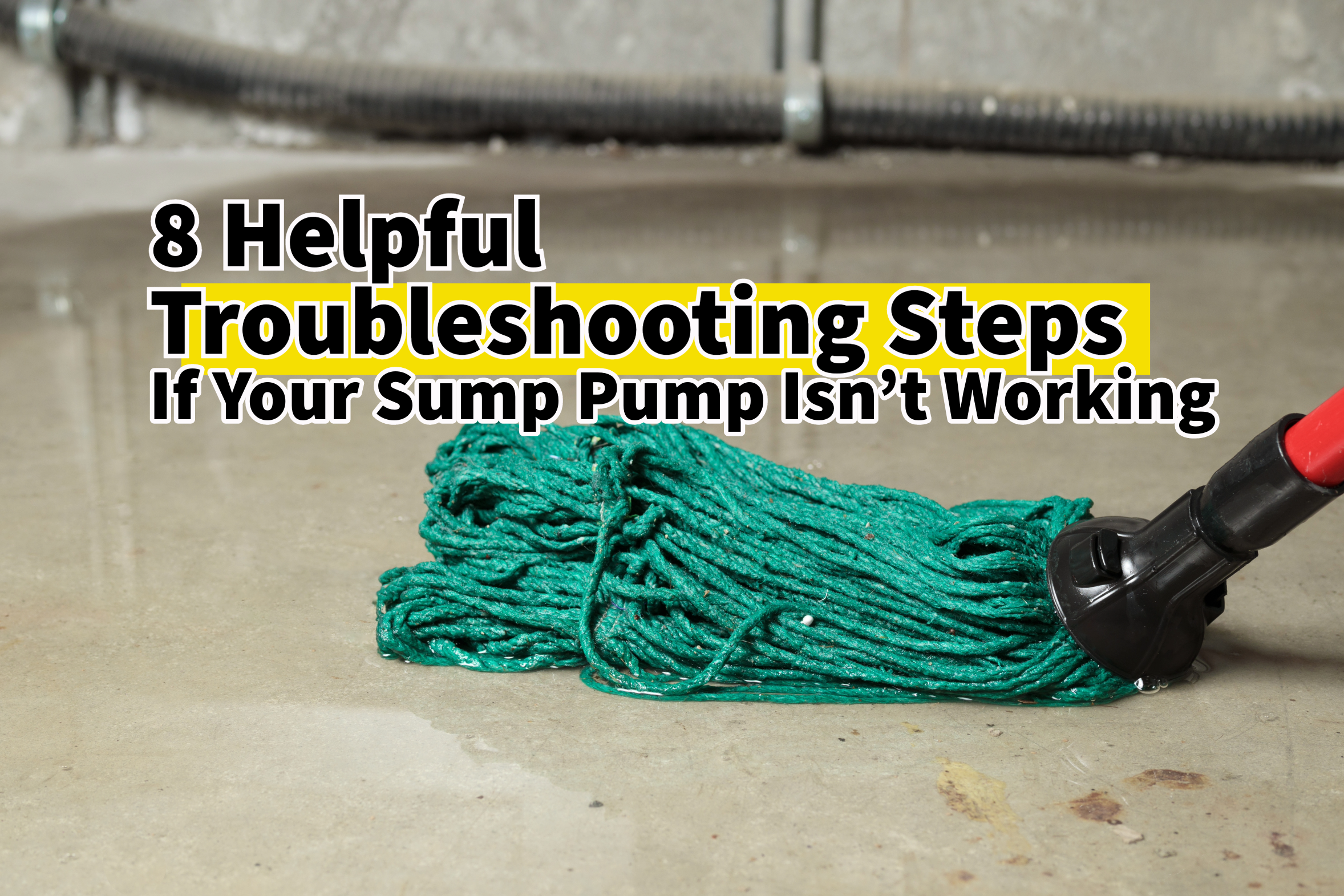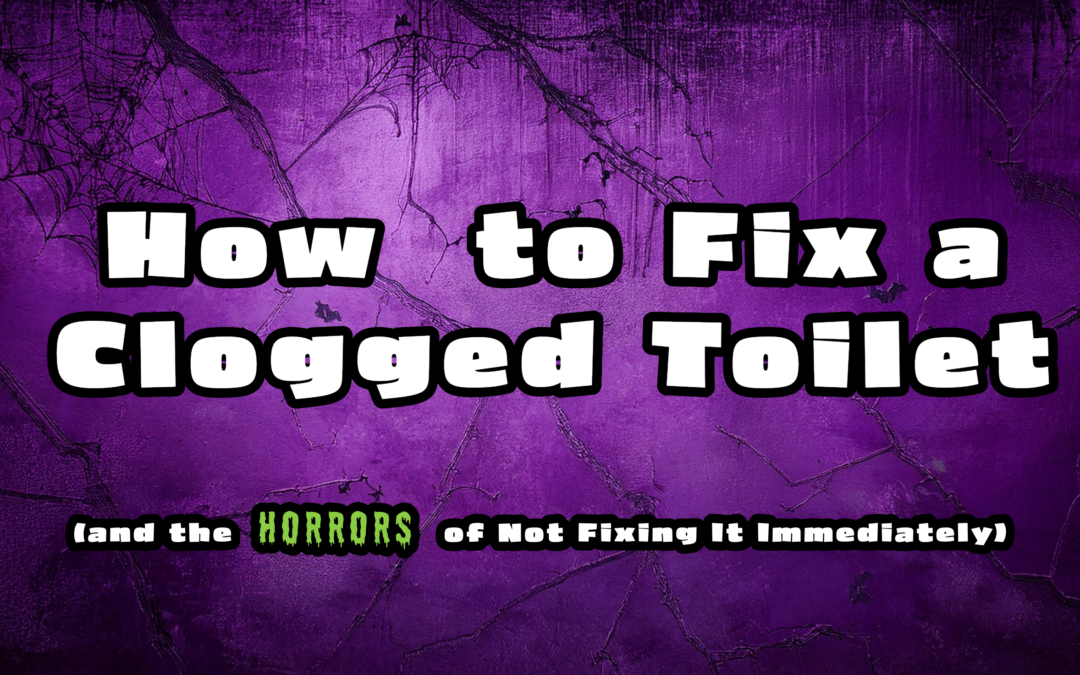Sump pump problems are not uncommon around this time of the year. Given the recent weather, your sump pump may become overworked due to all the snowmelt and rain. When your sump pump stops working, it’s important to not postpone getting it working once again.
Sump pumps are designed to pump water out through the discharge pipe and away from your home’s foundation. So, when a sump pump stops working, it can quickly lead to basement flooding and other problems. Fortunately, your experts at Five Star Columbus Plumbing are here to help you troubleshoot. And in case you are not currently experiencing a malfunctioning sump, please don’t wait for an issue to arise! It’s equally important to familiarize yourself with the step-by-step process of troubleshooting a faulty sump pump.
IF YOUR SUMP PUMP ISN’T WORKING, TRY THESE STEPS:
- Try Checking the Power Supply: Power outages often cause sump pump malfunctions. If your sump pump stops working, first check if it’s plugged in and receiving power. Test the outlet with another device to determine if that’s the issue. You can also try unplugging and plugging back in the pump, but remember, this might only be a temporary solution.
- Try Testing the Pump Motor: Listen for any loud or unusual noises from the pump motor. However, if the motor isn’t running, check the circuit breaker and reset it as necessary.
- Try Inspecting the Float Switch: Next, check the float switch to ensure proper movement. A pump can cease functioning if it has been overworked, particularly during peak seasons. Look for any debris that requires clearing and verify if the float switch moves freely. A stuck or frozen float will undoubtedly hinder the pump’s intended activation.
- Try Examining the Pump Basin: In our fourth step, it’s time to inspect the inside of the sump pump (also known as the basin) to determine the situation. Do this by taking a look at the sump pump basin for any debris, dirt, or ice buildup. If you come across any, make sure to remove it to prevent any obstruction to the pump’s impeller.
- Try Testing the Check (or Overflow) Valve: Make sure to confirm that the check valve is correctly installed. Ensure that there are no obstructions blocking the valve, including debris. Occasionally, the pipe above it may get clogged, which can hinder the proper functioning of the check valve. The check valve’s primary function is to prevent water from flowing back into the sump pit.
- Try Inspecting the Discharge Pipe: If your basement is flooded and the water is not being discharged away from your home, it’s probably because the discharge pipe is clogged. So, start by locating and checking the discharge pipe.
- Try Checking Out the Weeping Hole: Another important aspect to consider is the weeping hole. Sump pumps have a small hole on the discharge pipe specifically designed to release air and ensure proper functionality. If this weeping hole becomes blocked, the pump will not operate correctly. In such cases, it is necessary to clear any clogs in the weeping hole.
- Try Thinking About the Size of Your Pump: If a sump pump is not the right size for your space, it won’t handle the large volumes of water effectively. If this has happened repeatedly, it might be time to think about upgrading to avoid this problem from occurring again.
You got this! With a little bit of determination and some focused DIY troubleshooting, you should be able to pinpoint the source of your sump pump problem. Sump pump issues in cold weather are never fun! On top of that, bear in mind that safety is of the utmost importance! So, please take your time and move slowly and carefully as you assess your situation and move through each troubleshooting step.
If You Want to Maintain Your Sump Pump, Here are Some Tips:
Below are a few straightforward recommendations for future use so you can maintain the upkeep of your sump pump and keep it running as smoothly as possible:
Loose debris plays a significant role in various sump pump issues. The accumulation of loose debris and particles can lead to clogs and impede the proper functioning of your sump pump. Additionally, random items and clutter placed around the sump pump can exacerbate this problem. For this reason, you should confirm that your sump pump pit lid is always securely in place and adequately sealed. A properly secured lid will effectively prevent debris from entering the pit and interfering with the pump’s operation.
It is also important to be attentive to any loud or irregular noises emanating from your sump pump. If you notice anything unusual, try to identify the source of the problem. If you are unable to do so, please do not hesitate to contact us. Maintaining vigilance for potential issues will enable you to detect minor problems that could escalate into major complications if left unattended.
IF YOUR ISSUE IS STILL NOT RESOLVED, CALL A PROFESSIONAL:

If you’re still confused and left scratching your head, wondering what is going on, don’t worry! We’re here to help! After all, this is our specialty! If you’ve followed the above troubleshooting steps and the issue still persists, please reach out to us for professional assistance. It’s important to have a licensed plumber inspect your sump pump and identify any underlying problems to get it working again.
Your home’s plumbing system is crucial, and there can be various issues that may arise regarding your sump pump. That’s why when it comes to your plumbing, it’s important to entrust your home to someone reliable. At Five Star Columbus Plumbing, we prioritize our customers and their safety, comfort, and satisfaction. You can always rest assured that we are dedicated to serving you with a 100% satisfaction guarantee!
You can trust Five Star Columbus Plumbing to handle all your plumbing issues with expertise. Call us at (614) 401-8086, or schedule an appointment online now by clicking here!


